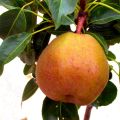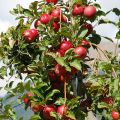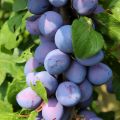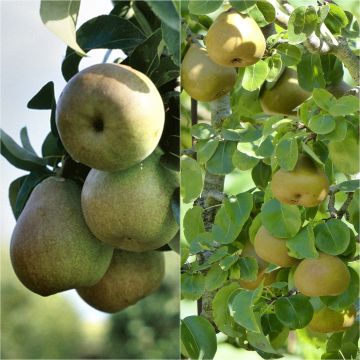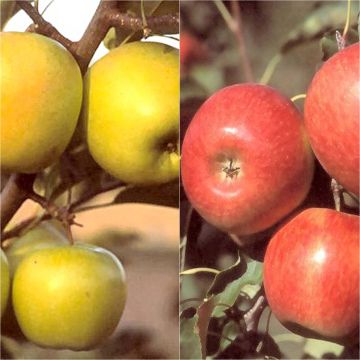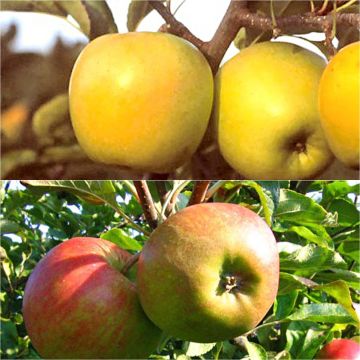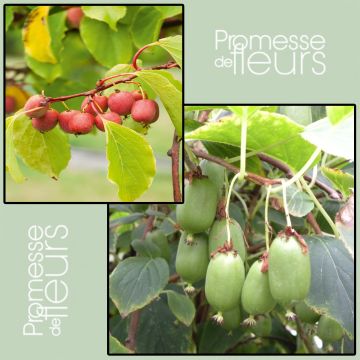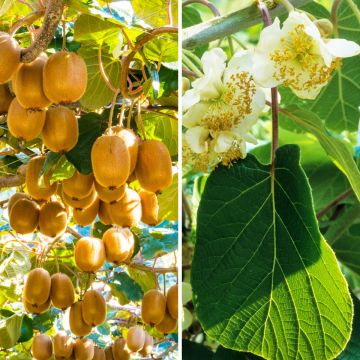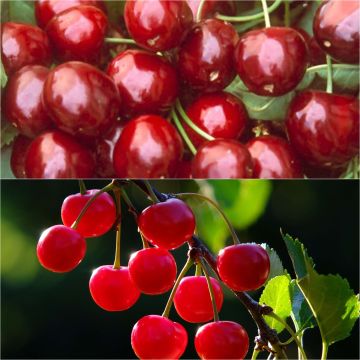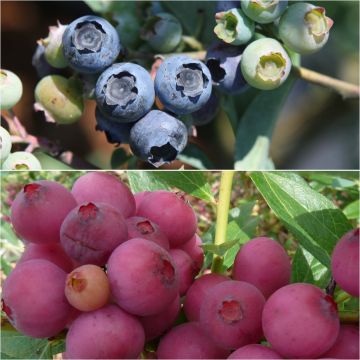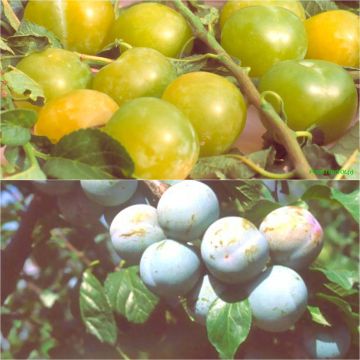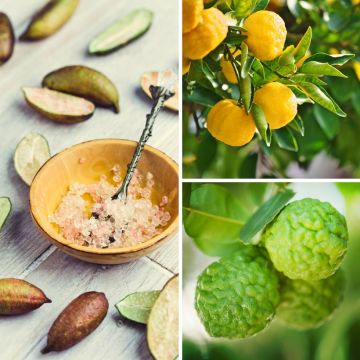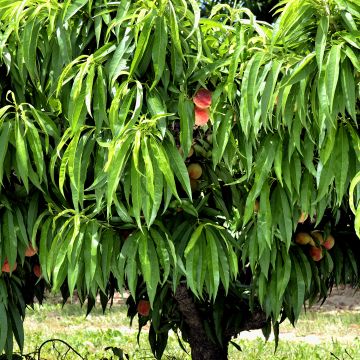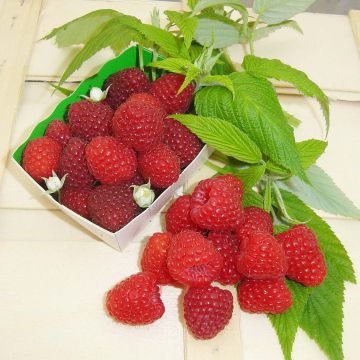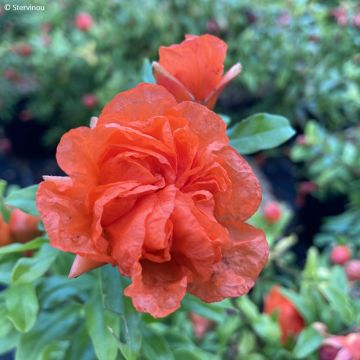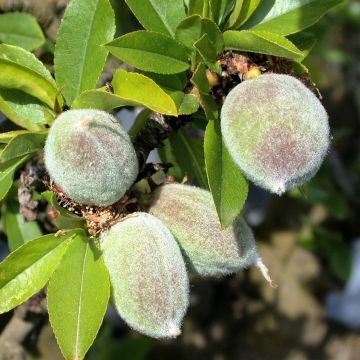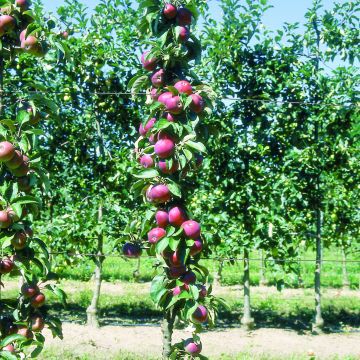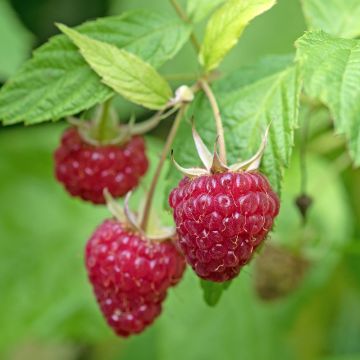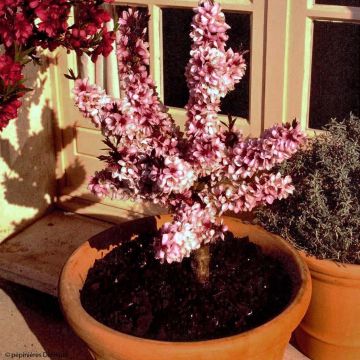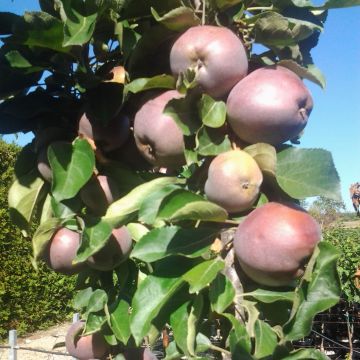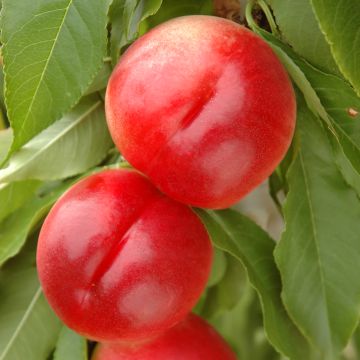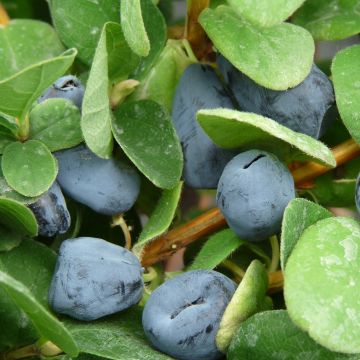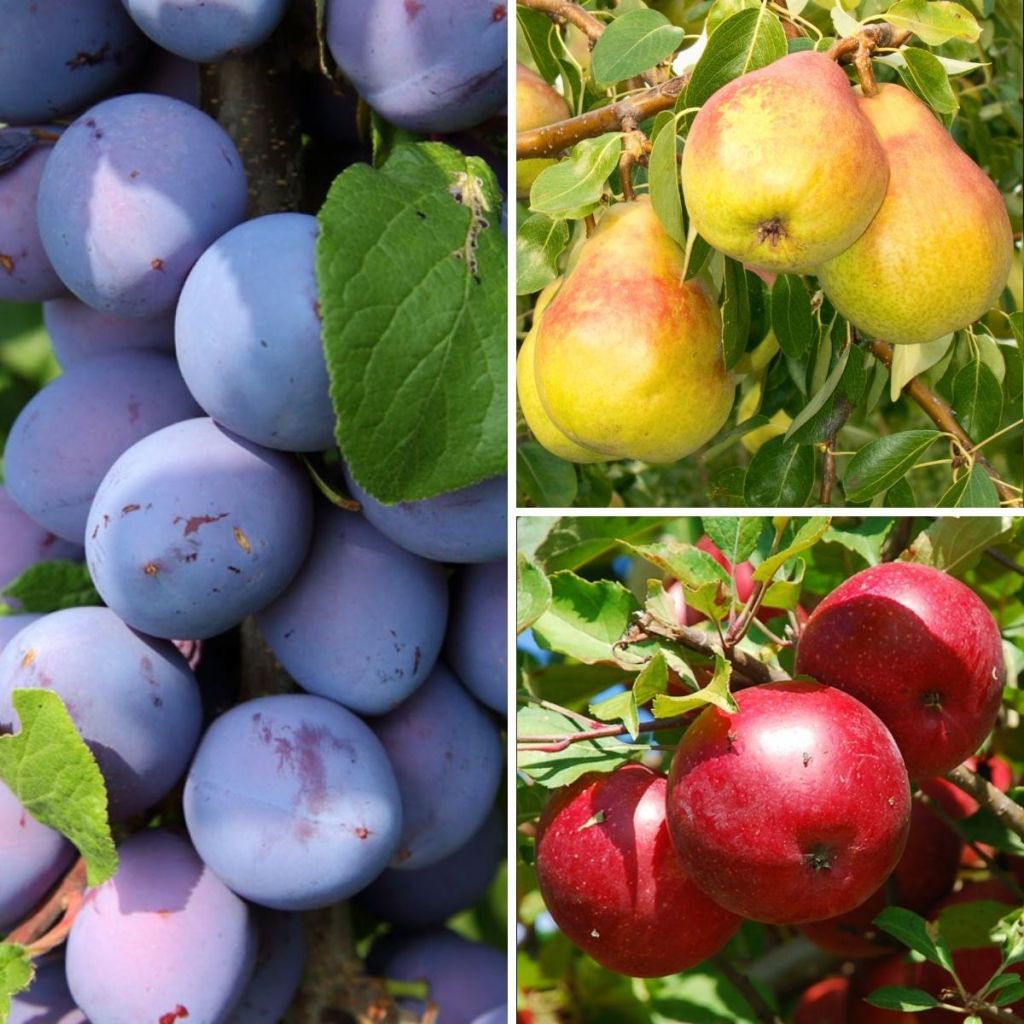

Autumn Harvest Dwarf Fruit Tree Collection
Autumn Harvest Dwarf Fruit Tree Collection
This plant carries a 6 months recovery warranty
More information
We guarantee the quality of our plants for a full growing cycle, and will replace at our expense any plant that fails to recover under normal climatic and planting conditions.
From €5.90 for pickup delivery and €6.90 for home delivery
Express home delivery from €8.90.
Collection items (3 plants)
-
Prunus domestica Fruit Me Plum Me Angeleno - Common plum
Price per single item: €39.50Find out more
Description
This Collection of Dwarf Fruit Trees Autumn Harvest brings together a plum, pear, and apple tree that does not exceed 1.50 m (5ft) in all directions when grown in pots. These small trees adapt their growth to the size of their pot and their soil volume. Their modest growth is also suitable for small gardens. More or less self-fertile, these varieties do not require the presence of a nearby partner to bear fruit. The plants produce fruits of comparable size and good taste as early as 2 to 3 years of cultivation. The harvests take place from August to October, depending on the variety. You can adopt them in a small garden, a small fruit hedge, a terrace, a patio...
This collection consists of:
- x 1 Self-fertile Dwarf Plum Tree 'Fruit Me, Plum Me' is a variety that produces plums about 4 cm (2in) in diameter, with violet skin covered with bloom. Their amber flesh is pleasantly juicy and sweet. Harvest in August. This self-fertile variety does not require another plum tree nearby to bear fruit. It is also a resistant variety to the viral disease called sharka.
- x 1 Self-fertile Dwarf Pear Tree 'Garden Gem' Pyred: The fruits of this variety are as big as those of traditional pear trees, but they are produced in small numbers. The pears are yellow and then red when ripe, slightly rounded. Their flesh is melting, sweet, and slightly sugary. Harvest in September and October. This is a self-fertile variety, not requiring another pear tree nearby to bear fruit.
- x 1 Dwarf Apple Tree 'Fruit Me, Apple Me' Red Gala: a variety that produces beautiful, round, regular apples with a medium size, 7 to 8 cm (3in) in diameter. The skin is thin, shiny, dark red on a yellow background. The flesh is yellowish, juicy, crisp, and very sweet, with a slight hint of acidity and aromas of banana and pear. Harvest in September-October. Partially self-fertile variety, reasonably good pollination. Pollinators to improve production: Fruit Me Apple Me Elstar, Fruit Me Apple Me Yellow Golden.
If grown in pots, these small fruit trees will reach a height of 1.50 m (5ft) and a spread of 1 m (3ft). Up to 2.50 m (8ft) in height and 2 m (7ft) in spread if planted in open ground. Pruning is generally not necessary; remove dead wood in spring.
You can plant these fruit trees from October to March in open ground. If you grow them in a container, planting is possible all year round except during freezing or heatwave periods. They will need any exposure to flowers and bear fruit abundantly. ISpacethe plants 1 m (3ft) apart. In open ground, Dig a wide planting hole at least three times the volume of the root ball. Simultaneously, add organic matter (compost, potting soil, etc..) and a basal fertiliser like a ground horn. Do not bury the graft collar. Stake if necessary. Water abundantly, even in winter and even if it rains.
In containers: choose a large volume model, 30 to 50 liters, with drainage holes. Use a mixture of topsoil and good quality potting soil. Regular applications of fertilizer for fruit trees will be necessary, as well as regular watering, to obtain generous harvests.
Report an error about the product description
Plant habit
Fruit
Flowering
Foliage
Botanical data
Rosaceae
Cultivar or hybrid
Other Our fruit tree and berry bush collection
Planting and care
Plant these dwarf fruit trees in the ground or a pot. Choose a sunny location. They need fertile, loose soil that doesn't dry out too much in summer. Do not bury the graft union. Water abundantly the first time, even in winter, even if it rains. Fruit trees are ideally planted between October and March, outside of the freezing period. In winter, you can add a small handful of wood ash, rich in potash, which will improve fruiting.
Watch out for possible attacks from aphids and other pests during the season. Only keep the harvested fruits.
Planting period
Intended location
Care
This item has not been reviewed yet - be the first to leave a review about it.
Fruit trees for small gardens
Haven't found what you were looking for?
Hardiness is the lowest winter temperature a plant can endure without suffering serious damage or even dying. However, hardiness is affected by location (a sheltered area, such as a patio), protection (winter cover) and soil type (hardiness is improved by well-drained soil).

Photo Sharing Terms & Conditions
In order to encourage gardeners to interact and share their experiences, Promesse de fleurs offers various media enabling content to be uploaded onto its Site - in particular via the ‘Photo sharing’ module.
The User agrees to refrain from:
- Posting any content that is illegal, prejudicial, insulting, racist, inciteful to hatred, revisionist, contrary to public decency, that infringes on privacy or on the privacy rights of third parties, in particular the publicity rights of persons and goods, intellectual property rights, or the right to privacy.
- Submitting content on behalf of a third party;
- Impersonate the identity of a third party and/or publish any personal information about a third party;
In general, the User undertakes to refrain from any unethical behaviour.
All Content (in particular text, comments, files, images, photos, videos, creative works, etc.), which may be subject to property or intellectual property rights, image or other private rights, shall remain the property of the User, subject to the limited rights granted by the terms of the licence granted by Promesse de fleurs as stated below. Users are at liberty to publish or not to publish such Content on the Site, notably via the ‘Photo Sharing’ facility, and accept that this Content shall be made public and freely accessible, notably on the Internet.
Users further acknowledge, undertake to have ,and guarantee that they hold all necessary rights and permissions to publish such material on the Site, in particular with regard to the legislation in force pertaining to any privacy, property, intellectual property, image, or contractual rights, or rights of any other nature. By publishing such Content on the Site, Users acknowledge accepting full liability as publishers of the Content within the meaning of the law, and grant Promesse de fleurs, free of charge, an inclusive, worldwide licence for the said Content for the entire duration of its publication, including all reproduction, representation, up/downloading, displaying, performing, transmission, and storage rights.
Users also grant permission for their name to be linked to the Content and accept that this link may not always be made available.
By engaging in posting material, Users consent to their Content becoming automatically accessible on the Internet, in particular on other sites and/or blogs and/or web pages of the Promesse de fleurs site, including in particular social pages and the Promesse de fleurs catalogue.
Users may secure the removal of entrusted content free of charge by issuing a simple request via our contact form.
The flowering period indicated on our website applies to countries and regions located in USDA zone 8 (France, the United Kingdom, Ireland, the Netherlands, etc.)
It will vary according to where you live:
- In zones 9 to 10 (Italy, Spain, Greece, etc.), flowering will occur about 2 to 4 weeks earlier.
- In zones 6 to 7 (Germany, Poland, Slovenia, and lower mountainous regions), flowering will be delayed by 2 to 3 weeks.
- In zone 5 (Central Europe, Scandinavia), blooming will be delayed by 3 to 5 weeks.
In temperate climates, pruning of spring-flowering shrubs (forsythia, spireas, etc.) should be done just after flowering.
Pruning of summer-flowering shrubs (Indian Lilac, Perovskia, etc.) can be done in winter or spring.
In cold regions as well as with frost-sensitive plants, avoid pruning too early when severe frosts may still occur.
The planting period indicated on our website applies to countries and regions located in USDA zone 8 (France, United Kingdom, Ireland, Netherlands).
It will vary according to where you live:
- In Mediterranean zones (Marseille, Madrid, Milan, etc.), autumn and winter are the best planting periods.
- In continental zones (Strasbourg, Munich, Vienna, etc.), delay planting by 2 to 3 weeks in spring and bring it forward by 2 to 4 weeks in autumn.
- In mountainous regions (the Alps, Pyrenees, Carpathians, etc.), it is best to plant in late spring (May-June) or late summer (August-September).
The harvesting period indicated on our website applies to countries and regions in USDA zone 8 (France, England, Ireland, the Netherlands).
In colder areas (Scandinavia, Poland, Austria...) fruit and vegetable harvests are likely to be delayed by 3-4 weeks.
In warmer areas (Italy, Spain, Greece, etc.), harvesting will probably take place earlier, depending on weather conditions.
The sowing periods indicated on our website apply to countries and regions within USDA Zone 8 (France, UK, Ireland, Netherlands).
In colder areas (Scandinavia, Poland, Austria...), delay any outdoor sowing by 3-4 weeks, or sow under glass.
In warmer climes (Italy, Spain, Greece, etc.), bring outdoor sowing forward by a few weeks.

































